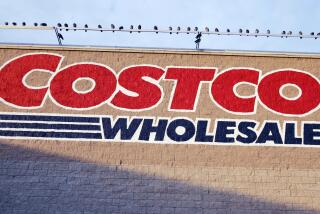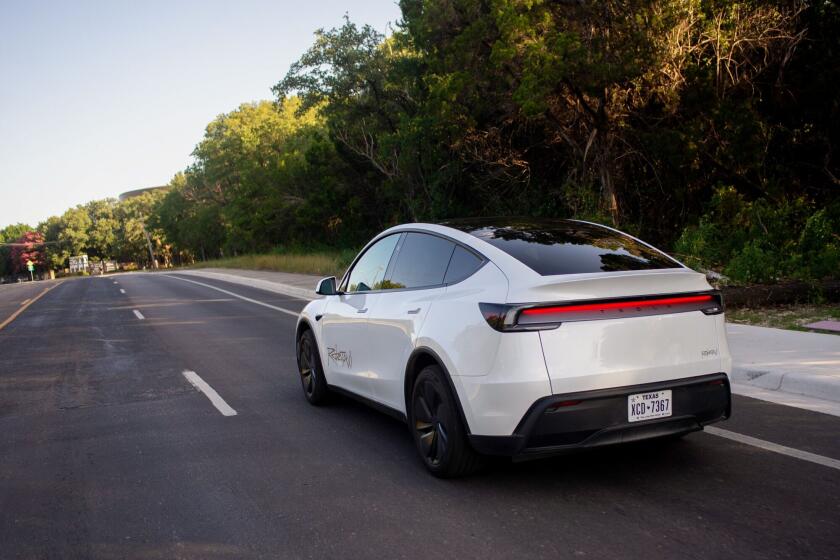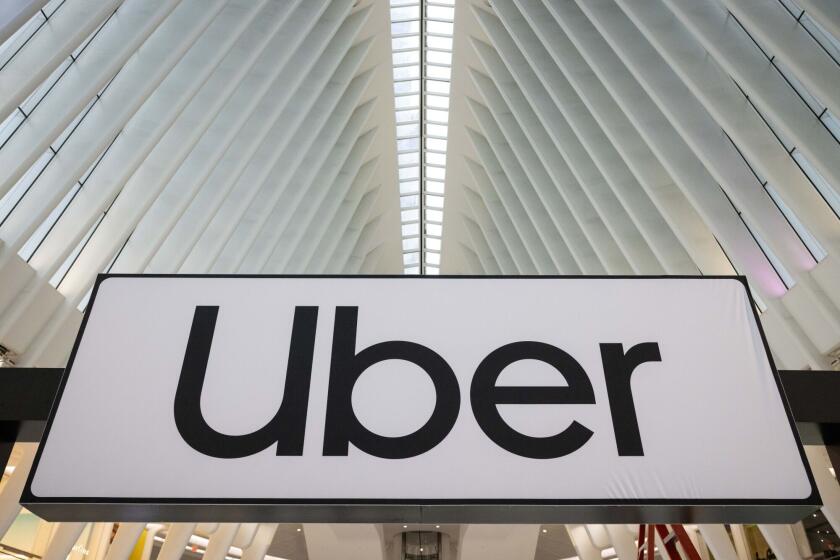At Citicorp Plaza parking structure : Automated equipment relieves blockage
- Share via
System eliminates long lines while customers fumble for change.
As anyone who has ever tried to leave a busy office building parking structure knows, the parking structure can be an office building’s biggest bottleneck.
The first totally automated parking system in the West will be introduced at the $650-million Citicorp Plaza in downtown Los Angeles Oct. 1 in an attempt to relieve this congestion.
This is the view of Roger Oldfield, president and founder of CitiPark International Inc. a Los Angeles-based parking services firm that will operate the ultimately 3,500 stalls in 18 stories of parking in the 2.7-million square foot development. The first phase has 1,590 spaces, Oldfield said, with the additional spaces expected to be in construction next February.
The Comp-U-Park system in the office and retail complex is manufactured in Great Britain by Godwin Warren and is the state of the art for automated parking, Oldfield said.
This is how the system works:
Upon pulling into one of the garage’s two street entrances, the driver receives a “spitter” ticket from a machine and the parking gate opens, according to Jack Finnerty, CitiPark International senior vice president and general manager.
When the person is ready to leave, he or she inserts the spitter ticket into an automated “pay on foot station.” If the ticket was validated, in the May Co. or Bullock’s shopping area, the ticket is read as such and an exit ticket is issued. If it is not validated, the machine reads the ticket and calculates the amount owed. The customer then puts the amount owed, up to a $20 bill, and receives change, along with an exit ticket.
Finnerty said that this “pay on foot” process eliminates the long lines at the exit that so frequently happen when someone is scrambling for change or looking for a lost ticket. If the exiting customer has exceeded his grace period, the exit machine will read his ticket as such and require him to pay the additional balance owed.
Not incidentally, he said, a human voice is available at the push of a button at each foot station and exit gate. The people on duty can open any gate in case of a problem.
“Because of the system’s high technology, the office can easily access up-to-the-minute information on the current state of the parking garage,” Finnerty said. “this includes how much money has been taken in at that moment, if any particular machine is low on change and even who put the key in the lock of one of the machines.”
Because all the keys are coded, it is easy to trace back the source of any mishandled money, he added. Mishandled money was one of the typical problems when a cigar box represented the typical state of cash register technology in most parking lots.
“All too often, a lone operator would collect money all day, only to have the greater part of the revenue pocketed by the wrong person at the end of the day,” Finnerty said. “The building owner would see little, if any, profit from his parking operation.”
This may not have mattered much when building and land costs were relatively low, but with each parking stall costing more than $10,000, today’s developer must make certan that the parking operation is a profit center, he added.
He cites the case of the Los Angeles Airport Hilton, the largest airport hotel and conference center in the nation. CitiPark International was hired to revamp the parking structure, a non-revenue-producing operation.
“We increased profits to the owner from nothing to $250,000 in the first year, “ he said,adding that profits should double in the second year.
Because the hotel’s parking garage was already in place, no structural changes could be made as part of the plan to make it a profit center.
“We were able to restripe the stalls to make a more efficient parking pattern,” Finnerty said. “We also put in automated equipment, changed the signs and improved access to the entrance and exit.”
He said that parking should not be treated as an afterthought in the design of a building. Planning efficient parking early can make the difference between a profit center and a money-losing operation.
More to Read
Inside the business of entertainment
The Wide Shot brings you news, analysis and insights on everything from streaming wars to production — and what it all means for the future.
You may occasionally receive promotional content from the Los Angeles Times.










